by Zeynab Alsadat Peyghambarzadeh

Zeynab Alsadat Peyghambarzadeh started her voluntary activities in the field of gender and sexuality in 2003. She also worked as a researcher, social activist, and journalist. In 2011, Peyghambarzadeh relocated to Sweden and continued her activities. She is one of the co-founders of the Persian website “Dojensgara” (which means bisexual in Persian). Peyghambarzadeh holds a bachelor’s degree in sociology from Tehran University and a master’s degree in gender studies from Lund University in Sweden.
by Zeynab Alsadat Peyghambarzadeh (originally published here)
Bisexuality has received minimal attention from the Persian media and journals on LGBT human rights in recent years. Iranian bisexuals have no voice of their own and have been judged based on homosexuals’ stereotypes. This paper aims to present and examine these stereotypes and judgmental thoughts about Iranian bisexuals and also the critical reactions that bisexuals and even a group of homosexuals have had to these stereotypes. The following is the most common clichés about bisexuals in Persian media:
I. Disregarding Bisexual Category among Other Sexual Minorities’ Categories
Persian media have provided little room for bisexuals’ independent voice, and homosexuals have primarily represented sexual minorities. One of the most common clichés is that there is no such category as bisexuality among diverse categories of sexualities and sexual practices. The Persian LGBT publications, such as “Cheragh,”۱“Aghaliat,”۲ and the LGBT section of Radio Zamaneh,3 often claim to represent lesbian, gay, bisexual, and transgender communities, though it is very rare to see them publishing anything on bisexuals. Recently, a Facebook page4 has been set up for Iranian bisexuals, though most of its content is either related to homosexuality or transsexuality. Similarly, many documentaries made in recent years about the Iranian LGBT community, and academic research conducted on this issue, lack any attention to Iranian bisexuals. Among documentaries, one can mention BBC Persian’s documentary, “Under the Razor of Gender”۵ and Farid Haerinejad’s “Out Of Iran; Iran’s Unwanted Sons and Daughters.”۶
The scholarly work of historians such as Afsaneh NajmAbadi and Janet Afary shows that similar to other societies, for centuries there have been Iranians who were involved in simultaneous parallel sexual relations with both sexes. Perhaps the only research that has studies, Iranian bisexuals, as a separate category was conducted by Azadeh Nemati,7 though their sampling of bisexuals is so small that makes it difficult for the findings to be scientifically meaningful.
Existing online groups in Persian – including open chat rooms and social network groups- are often dedicated to lesbians, gay men, or transsexuals, and vocationally all of them, but Iranian bisexual men and women have no place in cyberspace where they can discuss their issues in Persian.
Perhaps these realities have prevented many people to come out as “bisexual” in cyberspace and can explain why prominent Iranian LGBT activists rarely identify themselves as bisexual.
The same logic goes with the human rights report that has addressed the LGBT situation in Iran. In a 2010 report of Human Rights Watch (HRW) 8 about the situation of the LGBT community in Iran, bisexuals were described and judged by homosexuals. However, this report asserts that individuals from every category among sexual minorities, including bisexuals, were interviewed. Additionally, the report cited a bisexual category twice and each time, it inserted homosexuals’ judgments about bisexuals without offering any critical examination of their views.
In the HRW report, either bisexuality is being used by Iranian psychologists to oppress homosexuals, or bisexuals are defined as homosexuals who are married and claim that they are bisexual. In the first case, Farrokh, a 28-year-old gay male from Karaj, told Human Rights Watch that “his parents took him to a series of psychiatrists and psychologists after he told them that he was gay.”۹ As the report continues, according to Farrokh, some of these specialists were self-styled “Islamic psychiatrists” who convinced him that he was not homosexual: “When I was 17 years old my parents took me to a psychiatrist, in part because they suspected I was gay. I told my psychiatrist that I thought I was gay and he told my parents [about my confidential conversation with him]. It was very unprofessional of him to do this. They started pressuring me. Then they took me to an Islamic psychiatrist who told me I had an illness but that I could get better … By the time I was 21 they had convinced me that I was, in fact, bisexual. Everyone is bisexual, they said. ‘If you want you can be a heterosexual’.”۱۰
If from these psychologists’ perspective, everyone is bisexual, then, how can an individual decide to become heterosexual and not to remain bisexual? In the same report, Shadi, a 23-year-old lesbian, said: “There are a lot of bisexual women in Iran who are actually lesbians, but they have to be bisexual in order to survive.”۱۱
Also, the HRW report states that “Several lesbians who spoke to Human Rights Watch said that many married women in Iran who had relationships with women on the side did not self-identify as lesbians but thought of themselves as bisexuals.” ۱۲
From this perspective, the category of bisexuality does not exist, and even a number of Iranian homosexuals argue in favor of removing bisexuality as an independent category within the Iranian LGBT community. Examples of this debate can be seen in the post on the Small Media Facebook page.13 Also, some activists call themselves LGT rights activists.14
Although judging by its name, the International Gay and Lesbian Human Rights Commission is thought to only defend homosexuals’ human rights, it has addressed the issues of other sexual minorities in a number of its publications. But, even in those publications which bring bisexuals to the attention of the reader, this sexual minority has been dismissed at some points. For example, in one of the booklets15 which addresses bisexuals as well, under the section discussing the strategies of defending the rights of sexual minorities, bisexuals have been given no specific attention. In page 39 of this booklet16, the author asserts that most women whose husband files a complaint with the court for having extramarital same-sex relations are homosexual. This assertion has disregarded another possibility, as a number of these women might be bisexual too.
Bisexuals are also disregarded in most of these publications,17 which provide advice for the legal defense18 of LGBT community members arrested.
II. Treating Bisexuals as Lustful and Libidinous
Lustful and libidinous actions are stereotypically attributed to bisexuals. Many Iranian homosexuals think that bisexuals often would like to engage in simultaneous parallel relationships with both males and females. For instance, in a discussion on member-only Iranian female homosexuals and bisexuals Facebook19 page in 2012, an individual who identified herself as lesbian stated: “bisexuals want diverse sexual experiences, and after a short, while leaving their girlfriends; they are not trustworthy.” Another lesbian, on the same page, wrote: “when your girlfriend leaves you for a man, it is so painful.” Another member of this page, who believed that bisexuals eventually would choose to be heterosexual, stated: “I have never seen an old bi [bisexual].” Another lesbian, contrary to this comment, believed that: “bisexuals when getting aged, would like to engage in a relationship with women because they do not find what they want in a relationship with a man. Also, a woman can easily fall in love with them and will not lose her interest in them like men. If bisexuals would engage with men, it is because it was easier [to access to a man rather a woman]; their relationship will not last and after a short while, they will need a deep relationship with a woman.”
One of the lesbian members of this page in response to a bisexual member emphasized that not bisexuals have simultaneous relationships with men and women. She commented: “My dear, I agree with you and respect you and the community of bisexuals, but there are few bisexuals who wouldn’t leave their partner and wouldn’t engage in a relationship with a lesbian just for having sex. It is two years that I, myself, have been in a relationship with a bi. And I can tell you that I became sometimes naughty [that I wanted to be with someone else] but I can trust that she never did so. This is great. But, not the majorities are like this, my dear. I have seen women who did not like their husbands so they become attracted to a girl and after a short while, they forget everything. One of my friends committed suicide after a year because a woman, who wanted to forget her relationship with her ex-boyfriend, started dating her, and unfortunately, the future of a person was ruined [by suicide].”
III. Switching from homophobic Stereotypes to biphobic Clichés
Some homosexuals, in their description of bisexuals, resort to heterosexuals’ homophobic sentiments and clichés. For instance, the blogger of the blog, hamjensgaray e man bavar Nakon tanhaeeiat ra,”۲۰ identifies bisexuals as hamjensbaz”۲۱ and states: “ or bisexual is a person who sexually engages in same-sex relationship, and emotionally gets involved with opposite sex; in long term, s/he will be attracted to opposite sex and marry him/her. If you ask a hamjensbaz to select between a man and a woman, the choice of same-sex partner will be a temporary choice; [this is something that] some psychiatrists identify it as sexual curiosity and some say that the person acts upon his/her same-sex urges because s/he doesn’t have access to opposite sex.”
This blogger also believes that psychiatrists can “cure” bisexuals. He also states that bisexuals are the addressees of Surah Lut of the Qur’an; the blogger also addresses bisexuals: “O’ the ones who are bisexuals, I know that you insult me because your deeds are similar to people of Lut. The adversaries of homosexuals are due to your inhumane acts. It is because of your acts that nobody would know the difference between homosexuality and hamjensbazi, and everyone looks at them the same. But, I think if you become a believer, God will forgive you because Gabriel told Abraham that even if there were only five believers among them, God’s wrath would not descend upon them, because people of Lut did not believe in God and his Prophets; they also committed rape against others.”
In the Facebook page of RanginKaman radio,22 a homosexual also commented: “I am homosexual, not hamjensbaz.I am so angry. I am looking for love, not lust. I am 18 years of age, and can handle loneliness, but I hate two things: 1) those hamjensbaz who pretend to be homosexual and) bisexuals…”۲۳ This post, later, was removed from this Facebook page.
VI. Bisexuals are not Subject to Discrimination
One of the reasons that a group of homosexuals does not include bisexuals in the community of sexual minorities is their assumption that bisexuals conform to social norms, and, hence, are not subjected to discrimination. For instance, Shadi Amin in an interview with Radio Zamaneh states: “We should speak clearly [as to what group we are speaking about]. We should clarify whether we speak about homosexuals for whom their sexual practice carry the penalty of execution in Iran; or we speak about transsexuals that should go under surgery [for sex reassignment] without any legal process; or we talk about bisexuals who usually live in conformity with social norms while sometimes they are involved in sexual relations with their same-sex. Pressures on each of these different groups, and legal discriminations [against them] are totally different.”۲۴
Using similar logic, a report published by “Justice for Iran” and “۶Rang” about forced sex reassignment surgery in Iran, reproduce this stereotype that all bisexuals have a “feminine” appearance and thus are not subject to discrimination.25 The report only refers to bisexuality in a section about a group of Iranian female football players, who were barred from the team by the Iranian authorities. The report stated: “Furthermore, officials repeatedly refer to female players whose appearance is not typically feminine as bisexual and subject them to harassment and ban from participation in the games.”۲۶
Challenging Biphobia
There have been few examples of biphobia being challenged in Persian media. For instance, on March 17, 2012, a debate took place on a member-only section of Small Media’s LGBT Facebook group page about the call to eliminate ‘bisexuality’ from the LGBT. Amir, a homosexual, had shared a blog post he had written on the topic asking, “Can those who say bisexuals should be eliminated from the LGBT community, and we should become LGTs instead, prove that they are not bisexual themselves? Who will determine who is bisexual and who is not? … One thing is clear: the sexual desire for a same-sex partner is part of a bisexual’s sexual orientation … if a bisexual man or woman is attracted to someone of the same sex, what is the difference between him/her and a homosexual? … When you make bisexuality a taboo, and marginalize them, the natural reaction from bisexuals is to keep their sexuality a secret; and do you realize how harmful this could be? Putting pressure on bisexuals to get them to identify themselves [as] homosexual, or to exclude them from the homosexual community if they can’t identify themselves as homosexuals, will create a phenomenon called ‘ex-gay’, which will harm the theoretical and political-social status of our community and bring us to disrepute.”۲۷ Male and female homosexual bloggers of “Hamjensgarayan e Tehran va Iran” (Homosexuals of Tehran and Iran in Persian) consider the term “hamjensbaz” as insulting and believe that this term should not be applied to describe bisexuals.28
Delaram, a lesbian, also writes in Maha journal29: “it is better for us, homosexuals, to put an end to our improper judgments about bisexuals. Aren’t we judged improperly in our everyday life? Why should we then judge others unfairly? If you [we] don’t, like others, provide improper judgments about us, and that you want that they would think about homosexuality [properly], we ourselves should think [about others’ sexuality] too and learn more about human [sexual] nature.”۳۰
Sometimes, bisexuals have found an opportunity to defend themselves. Sima, an Iranian bisexual, in an interview with Cheragh journal says: “In my opinion, a bisexual might be viewed as a person with more opportunity to select his/her partner but I believe that bisexuals are subject to discrimination, and in some cases, even more than homosexuals…. A bisexual, on the one hand, is considered weird by heterosexuals; and on the other hand, homosexuals view him/her as a heterosexual who is in conformity with [the] majority.”۳۱
An Iranian bisexual also writes in his blog: “Owing to lack of sufficient information and common preconceptions, most homosexuals think that bisexuals are homosexuals who have not acknowledged their sexual orientation yet and/or are not brave enough to identify themselves as gay or lesbian. There are lots of bisexual women who are considered ‘disloyal’ or ‘conservative,’ by lesbians, because they fall in love with men.
Bisexuals are, more than any other category among sexual minorities, lonely and rebellious. Adherence to inner voice and sense of self as a bisexual is a painful, heroic and tragic action. Bisexual men and women are [considered] so despicable and rogue that it is not easily possible to fit them in a social norm system. Bisexuals have no room neither in dominant and rigorous heterosexual culture, nor among restricted the homosexual community. Bisexuals are marginalized in between two subcultures.”۳۲
۱ The last issue of cheraq (Lamp in Persian) was published in November 2008. After that date, the publishers changed the name of the magazine to Neda. The complete archives of the magazine is available online at http://cheraq.net/ (accessed May 8, 2015).
۲ The archives of Aghaliat (minority in Persian) e-magazine is available online at:http://www.aghaliat.blogspot.com/ (accessed May 8, 2015).
۳ Radio Zamaneh is a Netherland-based Persian radio station. The LGBT section of the radio is available online at this address: http://www.radiozamaneh.com/category/lgbt(accessed May 8, 2015).
۴ The page could, at least until early May 2015, be found athttps://www.facebook.com/iranianbi (accessed May 8, 2015).
۵ BBC Persian’s Documentary “Under the Razor of Gender” is about sex-reassignment surgery in Iran. The documentary was made available in Persian on YouTube on November 9, 2014 at this address: https://www.youtube.com/watch?v=08UeMed-T3s(accessed May 9, 2015).
۶ The Persian version of Farid Haerinejad’s 2013 documentary, “Out of Iran” is available in full-length on YouTube: https://www.youtube.com/watch?v=TsPHc3hfGnU (accessed May 9, 2015).
۷ Nematy, Azadeh, et al, A Comparison of Early Maladaptive Schemata among Homosexual, Bisexual and Heterosexual People in Iran, 2014, Journal of Gay & Lesbian Mental Health, 18.
۸۱۰۰ Human Rights Watch, “We Are a Buried Generation,” ۱۵ December 2010,http://www.hrw.org/reports/2010/12/15/we-are-buried-generation-0 (accessed August 10, 2014).
۹ Ibid, p. 39.
۱۰ Ibid, p. 39.
۱۱ Ibid, p. 77.
۱۲ Ibid, 75.
۱۳ An example of this argument was made on the 17 March 2012 post on the Facebook page of Small Media, regarding LGBT. This post is only available to members only. Small Media’s Facebook page is available at: https://www.facebook.com/SmallMedia (accessed May 9, 2015).
۱۴ Shadi Amin, “Lesbophobia and Feminism: an interview”, ۱۷ May 2012, (in Persian)http://www.radiozamaneh.com/43632 (accessed May 9, 2015).
۱۵ IGLHRC, “How to Cover LGBT Issues; A Guide for Persian Media Professionals”, ۱stedition: 2013, (in Persian) http://iglhrc.org/iran/fa/Fa_Publications_MediaGuides (accessed January 19, 2015).
۱۶ IGLHRC, “How to Effectively Defend LGBT Clients: A Defense Strategy Manual for Legal Experts in Iran”, ۱st edition: 2013, (in Persian)http://iglhrc.org/iran/fa/Fa_Publications_Defending (accessed January 19, 2015).
۱۷IGLHRC, “How to Document and Report Human Rights Violations: Human Rights Documentation for the Iranian LGBT Community”, ۱st edition: 2013, (in Persian)http://iglhrc.org/iran/fa/Fa_Publications_Human_Rights_Documentation (accessed January 19, 2015).
۱۸ IGLHRC, “How to Advocate for Your Legal Rights in Iran: A Defense Strategy manual for the Iranian LGBT Community”, ۱st edition: 2013, (in Persian)http://iglhrc.org/iran/fa/Fa_Publications_Legal_Self_Defense (accessed Jnaury 19, 2015).
۱۹ This Facebook page could, at least until early May 2015, be found athttps://www.facebook.com/iranianbi (accessed May 8, 2015).
۲۰ “My darling homosexual: don’t believe your loneliness”, a Persian blog deleted from the Iranian blog host company, Blogfa: http://homosexualman.blogfa.com/post/1 ; HomoeTehran Blog, “What does it mean to be a faggot and how is it different from bisexuality”, ۲۱ September 2010, (in Persian)http://homotehran.blogspot.se/2010/09/blog-post.html (accessed August 10, 2014).
۲۱ Hamjensbaz is a Persian derogatory term to refer to homosexuals.
۲۲ Radio Rainbow (Rnaginkaman in Persian), is an online Persian radio Dario dedicated to LGBT issues. Their website is: http://www.radioranginkaman.org/ (accessed May 9, 2015).
۲۳ The Facebook page for the Persian LGBT internet-radio (Radio Ranginkaman) is:https://www.facebook.com/Radioranginkaman (accessed May 9, 2015). The deleted post cited here was accessed February 28, 2014.
۲۴ Shadi Amin, “Lesbophobia and Feminism: an interview”, ۱۷ May 2012, (in Persian)http://www.radiozamaneh.com/43632 (accessed May 9, 2015).
۲۵ ۶rand, “Stop reparative Therapies & Mandatory Sex Reassignment Surgeries: Homophobia, Transphobia and Health Care Abuse in the Islamic Republic of Iran”, June 2014, http://6rang.org/english/wp-content/uploads/2014/06/Stop-Reperative-TherapiesMandatory-Sex-Reassignment-Surgeries.pdf ((accessed May 9, 2015).
۲۶ Ibid, p. 14.
۲۷ Small Media, “LGBT Republic of Iran: An Online Reality?” May 2012,http://smallmedia.org.uk/lgbtrepublic.pdf (accessed August 10, 2014), p. 82.
۲۸ HomoeTehran Blog, “What does it mean to be a faggot and how is it different from bisexuality”, ۲۱ September 2010, (in Persian)http://homotehran.blogspot.se/2010/09/blog-post.html (accessed August 10, 2014).
۲۹ Maha was an online journal for Iranian LGBT in Persian. Their website was last updated in March 2008, but the entire archives of the magazine is available in Persian at this address: https://majalehmaha.wordpress.com
۳۰ Maha; Electronic Magazine for Iranian Homosexuals, January 2006, Vol. 13, available in Persian at:http://majalehmaha.wordpress.com/%D8%B4%D9%85%D8%A7%D8%B1%D9%87-%D8%B3%DB%8C%D8%B2%D8%AF%D9%87-%D8%AF%DB%8C-%D9%85%D8%A7%D9%87-1384/(accessed August 10, 2014).
۳۱Cheraq Magazine, “in interview with an Iranian bisexual woman’, May 2007, (in Persian),http://cheraq.net/28/08.htm (accessed August 10, 2014).
۳۲ Shahrokh Raisi, “Bisexuality”, August 2006, (in Persian),http://www.cheraq.net/19/4.htm (accessed August 10, 2014).

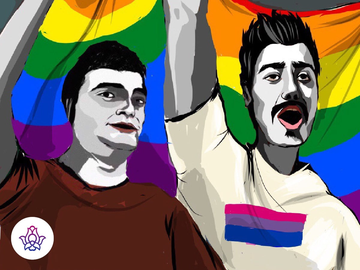
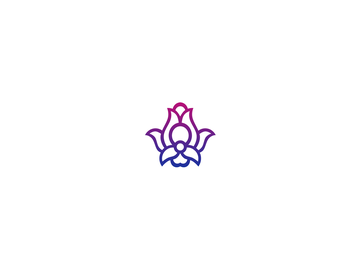
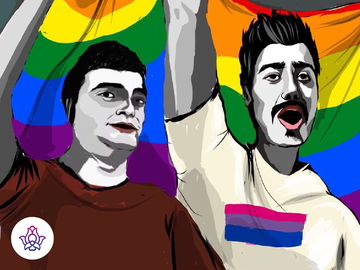
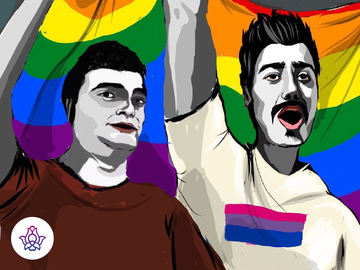
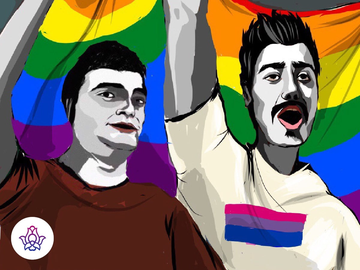
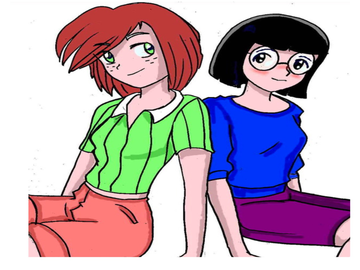


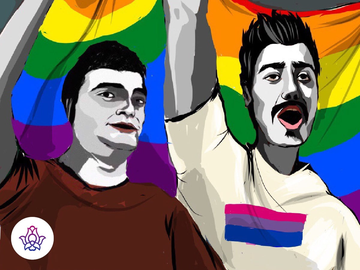

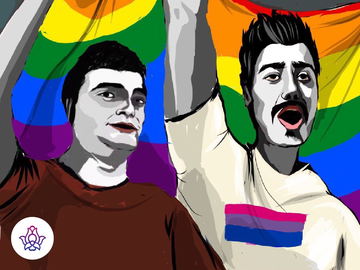
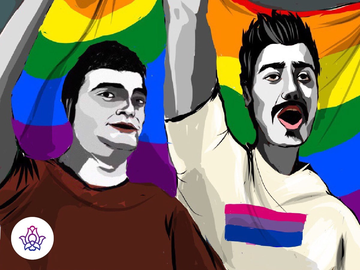
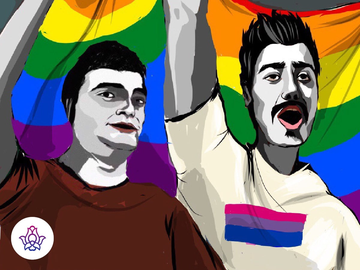
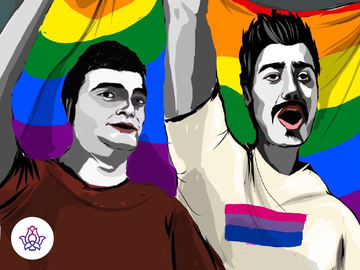
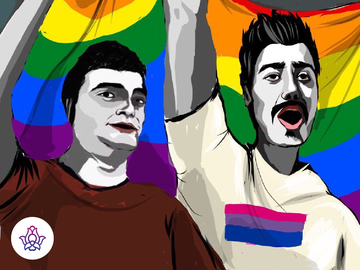
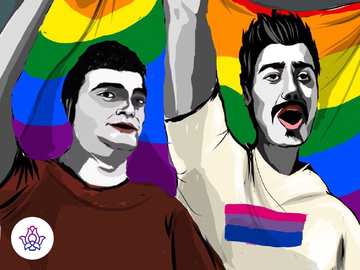
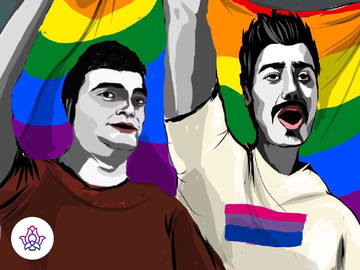
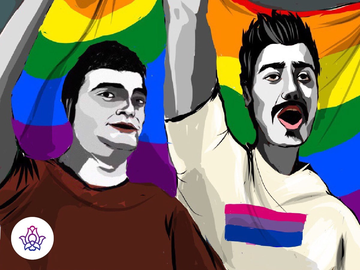
show me
All comments will be availabee after approvind by author